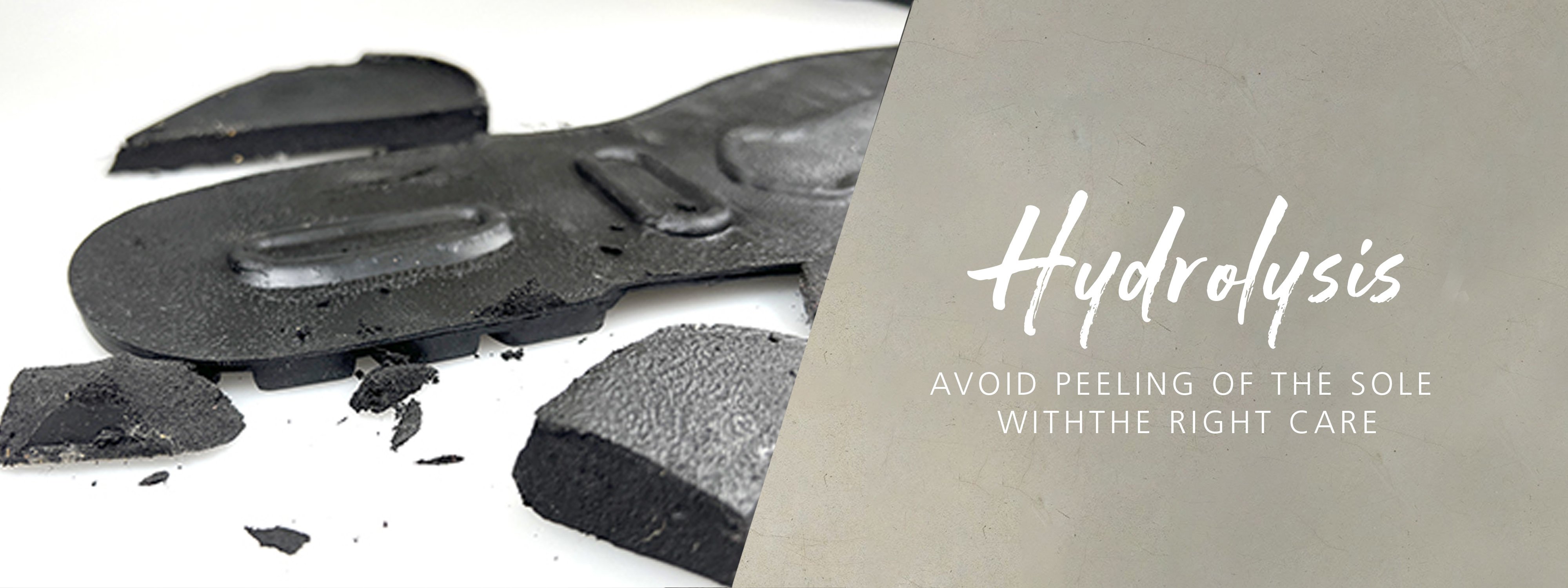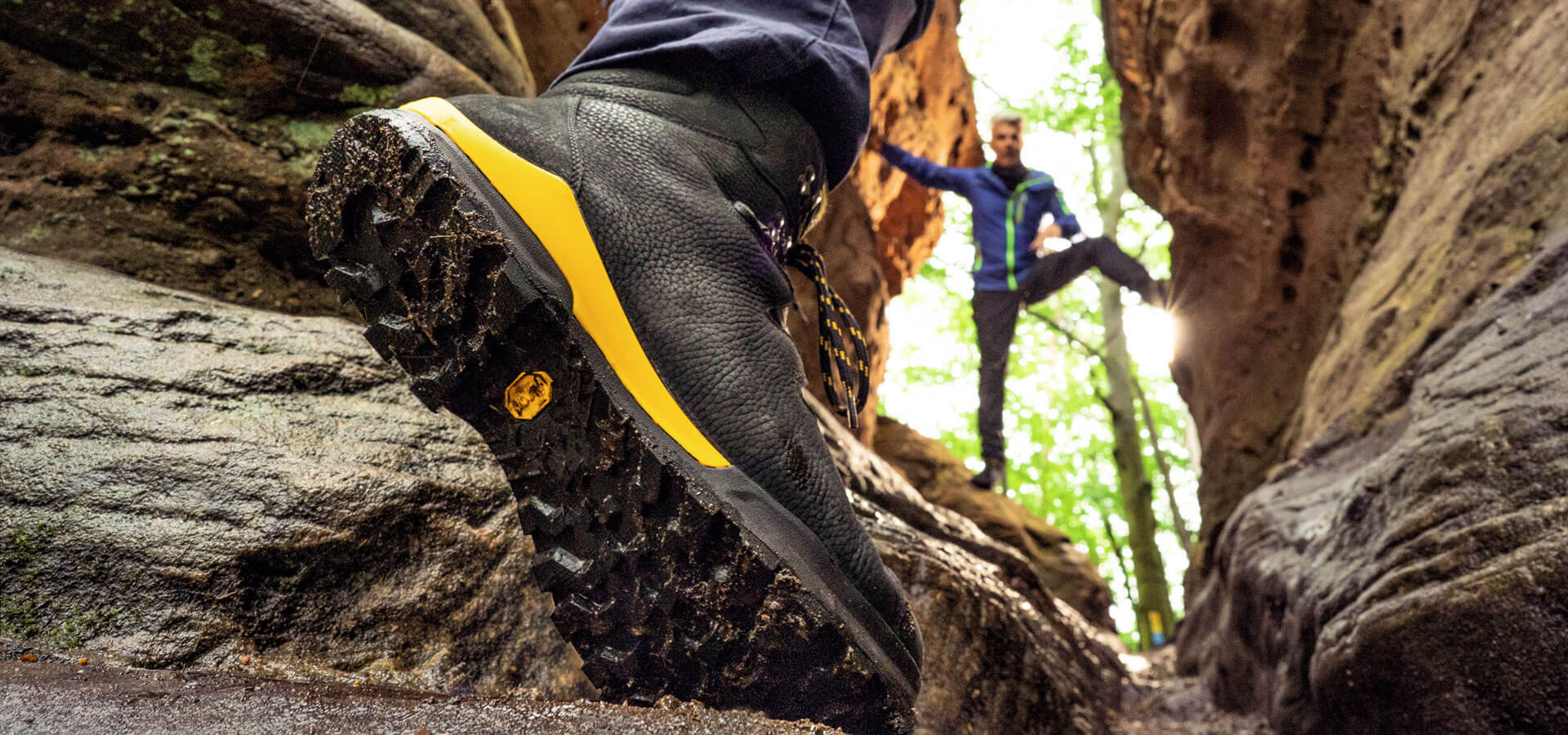
HYDROLYSIS
AVOID THE DETACHMENT OF THE SOLE WITH THE RIGHT CARE
Hydrolysis is a chemical process that actually always takes place. In BÄR hiking boots, the sole is connected to the shoe by a midsole. This midsole is made of polyurethane (PU) and provides damping, flexibility and lightness. PU contains softeners, and hydrolysis is the process by which these softeners evaporate from the sole. This causes the sole to change shape and become hard. When wearing the shoe, the outsole breaks away from the crumbling PU due to the rolling movement of the foot.
"YOU REST, YOU RUST"
With shoes that are used a lot and regularly, the hydrolysis process is delayed. After longer breaks from hiking, you should use the stored shoe in everyday life. The longer a shoe is not worn, the faster hydrolysis strikes. Hydrolysis is a storage damage, like the brittleness of car tires. You get problems with your hiking boots if they have not been used for a long time, even if they were new before.
However, hydrolysis can occur not only with rarely worn hiking boots with PU soles, but also with Sunday shoes worn only on special occasions.

IDENTIFY HYDROLYSIS WITH THE PRESSURE TEST:
Not only is it annoying, it can be dangerous to hike in a shoe that has advanced hydrolysis. Take a closer look at shoes you haven't worn in a while. If the midsole is crumbling or even peeling, don't tour in that condition.
Another tip, is the pressure test, to make sure your sole is still soft enough, you can press against the sole with a pointed object, such as a key with moderate force. The PU sole should give a little bit and the pressure point should close immediately, otherwise it is hardened.
THE RIGHT WAY TO STORE YOUR SHOES
The correct storage of your hiking boots determines whether the process of hydrolysis is prevented or initiated.
BÄR TIPS
•Clean and care for your shoes regularly. All information about shoe care you can find here: smooth leather care
•Store your shoes in ventilated, dry and rather cool rooms
•Avoid high temperatures, as in direct sunlight, these accelerate the progression of hydrolysis. The leather becomes cracked and brittle.
•Your hiking boots should always be dry. Moisture contributes to mold growth and hiking boots may deform.
•Use wooden shoe trees, which are best inserted into the shoes immediately after wearing. The beech wood absorbs the moisture generated in the shoe particularly well. Here you can find our wooden shoe trees: shoe accessories
WHY PU?
We use high-quality PU for the soles of BÄR shoes. The special material properties of PU mean that the damping properties of the sole remain very constant over the entire surface and over a period of many years, despite intensive use. At the same time, PU is particularly dimensionally stable, which means that it can withstand physical stress from rocks, branches, etc., very well. To round off this package of material properties, PU is also lightweight and flexible. This is exactly why the use of PU is very popular for mountain and hiking boots.
DISCOVER OUR HIKING SHOES
More detailed information and tips about our hiking shoes can be found here: Hiking shoe tips from BÄR



